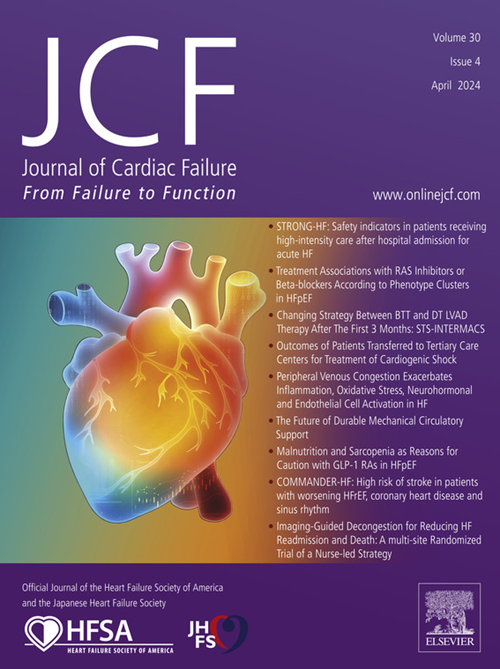Racial Differences of Cardiac Structure and Function in Heart Failure With Preserved Ejection Fraction
IF 6.7
2区 医学
Q1 CARDIAC & CARDIOVASCULAR SYSTEMS
引用次数: 0
Abstract
Background
Potential race differences in cardiac structure and function among patients with heart failure with preserved ejection fraction (HFpEF) are not well-understood, but may have pathophysiological and treatment implications.
Methods and Results
In this study, patients with HFpEF who self-identified as Asian (n = 360), White (n = 787), and Black (n = 171) from 3 institutions underwent comprehensive transthoracic echocardiography to evaluate for potential differences. The Asian HFpEF group was oldest and the Black HFpEF group was youngest (75 ± 12 years vs 73 ± 13 years vs 62 ± 12 years; P < .0001). Women constituted the lowest proportion of patients with HFpEF among Asian individuals, but were the largest among Black patients (49% vs 56% vs 73%; P < .0001). Body mass index and obesity prevalence were highest in Black patients with HFpEF and were lowest in Asian patients. Black individuals with HFpEF had greater left ventricular (LV) wall thickening and concentricity, smaller LV chamber size, leftward-shifted LV end-diastolic pressure–volume relationship, indicating greater LV stiffening, smallest left atrial volumes, and the most right ventricular dilatation. Asian individuals with HFpEF had greater LV and left atrial dilation, more rightward shifted LV end-diastolic pressure–volume relationship, and the highest arterial stiffness.
Conclusions
In summary, we show that patients with HFpEF of Asian, Black, and White race display key differences in clinical, anthropometric, and cardiac structure-function indices, indicating that consideration of race-related differences might important to individualize treatment strategies in HFpEF.
射血分数保留型心力衰竭患者心脏结构和功能的种族差异
射血分数保留型心力衰竭(HFpEF)患者在心脏结构和功能方面的潜在种族差异尚未得到充分了解,但可能会对病理生理和治疗产生影响。在这项研究中,来自三家机构的自称为亚裔(360 人)、白人(787 人)和黑人(171 人)的 HFpEF 患者接受了全面的经胸超声心动图检查,以评估潜在的差异。亚裔 HFpEF 组年龄最大,黑人 HFpEF 组年龄最小(75±12 岁 vs. 73±13 岁 vs. 62±12 岁,P
本文章由计算机程序翻译,如有差异,请以英文原文为准。
求助全文
约1分钟内获得全文
求助全文
来源期刊

Journal of Cardiac Failure
医学-心血管系统
CiteScore
7.80
自引率
8.30%
发文量
653
审稿时长
21 days
期刊介绍:
Journal of Cardiac Failure publishes original, peer-reviewed communications of scientific excellence and review articles on clinical research, basic human studies, animal studies, and bench research with potential clinical applications to heart failure - pathogenesis, etiology, epidemiology, pathophysiological mechanisms, assessment, prevention, and treatment.
 求助内容:
求助内容: 应助结果提醒方式:
应助结果提醒方式:


